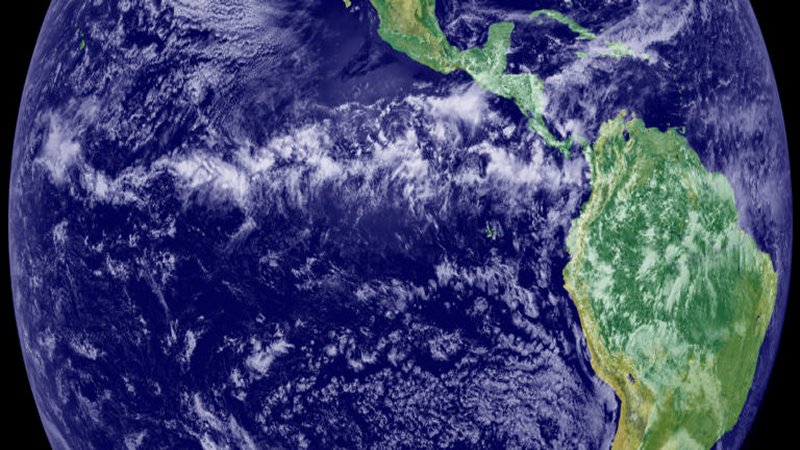Climate Change Will Alter Position Of The Earth’s Tropical Rain Belt
Eddie Gonzales Jr. – MessageToEagle.com – Future climate change will cause a regionally uneven shifting of the tropical rain belt – a narrow band of heavy precipitation near the equator – according to researchers at the University of California, Irvine and other institutions.
This development may threaten food security for billions of people.
 Roughly in line with the equator, Earth’s tropical rain belt is expected to shift irregularly in large hemispheric zones as a result of future climate change, according to a new study by UCI civil & environmental engineering and Earth systems science researchers. The alterations are expected to cause droughts and threaten biodiversity and food security across broad swaths of the planet by the year 2100. NASA
Roughly in line with the equator, Earth’s tropical rain belt is expected to shift irregularly in large hemispheric zones as a result of future climate change, according to a new study by UCI civil & environmental engineering and Earth systems science researchers. The alterations are expected to cause droughts and threaten biodiversity and food security across broad swaths of the planet by the year 2100. NASA
In a study published today in Nature Climate Change, the interdisciplinary team of environmental engineers, Earth system scientists and data science experts stressed that not all parts of the tropics will be affected equally. For instance, the rain belt will move north in parts of the Eastern Hemisphere but will move south in areas in the Western Hemisphere.
According to the study, a northward shift of the tropical rain belt over the eastern Africa and the Indian Ocean will result in future increases of drought stress in southeastern Africa and Madagascar, in addition to intensified flooding in southern India. A southward creeping of the rain belt over the eastern Pacific Ocean and Atlantic Ocean will cause greater drought stress in Central America.
“Our work shows that climate change will cause the position of Earth’s tropical rain belt to move in opposite directions in two longitudinal sectors that cover almost two-thirds of the globe, a process that will have cascading effects on water availability and food production around the world,” lead author Antonios Mamalakis, currently a postdoctoral fellow in the Department of Atmospheric Science at Colorado State University said in a press release.
Mamalakis said the sweeping shift detected in his work was disguised in previous modelling studies that provided a global average of the influence of climate change on the tropical rain belt. Only by isolating the response in the Eastern and Western Hemisphere zones was his team able to highlight the drastic alterations to come over future decades.
Co-author James Randerson, UCI’s Ralph J. & Carol M. Cicerone Chair in Earth System Science, explained that climate change causes the atmosphere to heat up by different amounts over Asia and the North Atlantic Ocean.
“In Asia, projected reductions in aerosol emissions, glacier melting in the Himalayas and loss of snow cover in northern areas brought on by climate change will cause the atmosphere to heat up faster than in other regions,” he said. “We know that the rain belt shifts toward this heating, and that its northward movement in the Eastern Hemisphere is consistent with these expected impacts of climate change.”
The weakening of the Gulf Stream current and deep-water formation in the North Atlantic is likely to have the opposite effect, causing a southward shift in the tropical rain belt across the Western Hemisphere.
“The complexity of the Earth system is daunting, with dependencies and feedback loops across many processes and scales,” said corresponding author Efi Foufoula-Georgiou, UCI Distinguished Professor of Civil & Environmental Engineering and the Henry Samueli Endowed Chair in Engineering.
“This study combines the engineering approach of system’s thinking with data analytics and climate science to reveal subtle and previously unrecognized manifestations of global warming on regional precipitation dynamics and extremes.”
Written by Eddie Gonzales Jr. – MessageToEagle.com Staff










